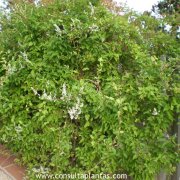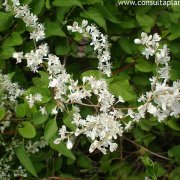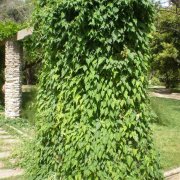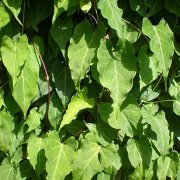Care of the climbing plant Fallopia baldschuanica or Russian vine |
|
The genus Fallopia, family Polygonaceae, includes 14 species of climbing shrubs and herbaceous plants native to temperate and subtropical regions of the Northern Hemisphere. They were previously included in the genus Polygonum. Some species are: Fallopia baldschuanica, Fallopia multiflora, Fallopia japonica, Fallopia convolvulus, Fallopia dumetorum. Common names: Russian vine, Bukhara fleeceflower, Chinese fleecevine, Silver lace vine, Mile-a-minute vine. This species is native to Asia. They are deciduous climbing shrubs with thin, highly branched stems that reach 15 meters (49.21 feet) in length. The leaves are large, bright green, alternate and ovate-lanceolate in shape. The abundant white flowers appear in highly decorative panicles. They bloom during summer and fall. They are fast-growing plants that are used in wild gardens and for covering walls, fences or pergolas. Fallopia baldschuanica can grow in full sun or semi-shade exposure (it will produce more flowers in the sun). It resists frost down to -10 ºC (14 ºF). The soil must be well drained and contain organic matter; In order for the substrate to flourish more, it should not contain much nitrogen. The planting is done in spring. Water frequently so that the substrate is always damp but never watery. In case of drought it can lose leaves. Fertilize with compost in the fall. Prune intensively in autumn to control its growth as it tends to become invasive plant. Russian vine is a resistant plant to the usual pests and diseases. Chinese fleecevine propagates by semi-woody cuttings during the summer. |
Images of the climbing plant Fallopia baldschuanica or Russian vine |
Find plants
Fallopia baldschuanica or Russian vine | Care and Growing
© 2026 FavThemes




